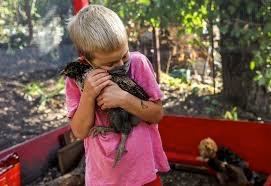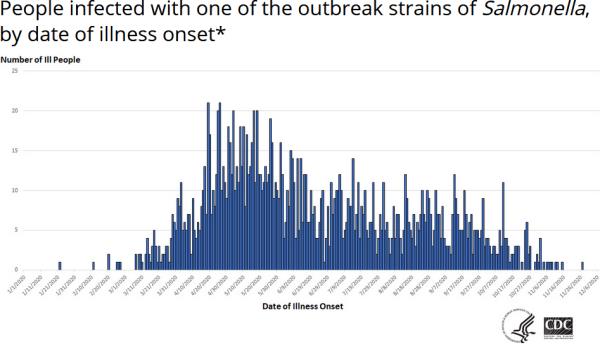 In a November 18th release, the Centers for Disease Control and Prevention (CDC) documented an increase in cases of salmonellosis in the ongoing outbreak attributed to contact with backyard chickens. From January 1st of the current year, 1,135 cases were recorded in 48 states, the District of Columbia, and Puerto Rico. Only 13 cases were confirmed in January and February, but reports rose sharply thereafter from April through August. Of those infected, 273 were hospitalized and two fatalities were attributed to the outbreak.
In a November 18th release, the Centers for Disease Control and Prevention (CDC) documented an increase in cases of salmonellosis in the ongoing outbreak attributed to contact with backyard chickens. From January 1st of the current year, 1,135 cases were recorded in 48 states, the District of Columbia, and Puerto Rico. Only 13 cases were confirmed in January and February, but reports rose sharply thereafter from April through August. Of those infected, 273 were hospitalized and two fatalities were attributed to the outbreak.
A variety of serotypes were isolated including S.Enteritidis, Hadar, Indiana, Infantis, Mbandaka, and Muenchen. The CDC noted that the number of actual infections far exceeds the documented level since many affected patients either do not seek medical attention or are treated symptomatically without laboratory investigation. It is noteworthy that 24 percent of the cases occurred in children under five years of age and 12 percent were under 12 months. Of 677 patients interviewed, 66 percent reported direct contact with backyard poultry before onset of symptoms. Chicks and ducklings for backyard flocks are purchased from feed stores or are ordered directly from small hatcheries. The CDC recorded 264 separate purchases from 150 locations with 17 hatcheries involved.
 Recovery and collation of data from as many as 48 states, DC, and Puerto Rico is only possible using the PulseNet system to identify cases that are then entered into the national database including the results of whole genome sequencing. State public health officials demonstrated commonality among infective strains in patients and their poultry in Ohio, California, Arizona, and Maryland.
Recovery and collation of data from as many as 48 states, DC, and Puerto Rico is only possible using the PulseNet system to identify cases that are then entered into the national database including the results of whole genome sequencing. State public health officials demonstrated commonality among infective strains in patients and their poultry in Ohio, California, Arizona, and Maryland.
Of the 1,112 samples subjected to laboratory examination 35 percent were predicted to be resistant to one or more antibiotics used for human therapy including ampicillin, streptomycin, tetracycline, and trimethoprim-sulfamethoxazole. Despite the CDC publishing advisories and recommending procedures including hand-washing it is impossible to prevent transmission of Salmonella from backyard poultry in their environment to residents of homes including children. Backyard poultry are inappropriate as pets and yield very expensive potentially contaminated eggs.
The cookie-cutter recommendations provided by the CDC to prevent salmonellosis sourced from backyard flocks and eggs are obviously not followed or are inadequate given the increasing incidence of infection.